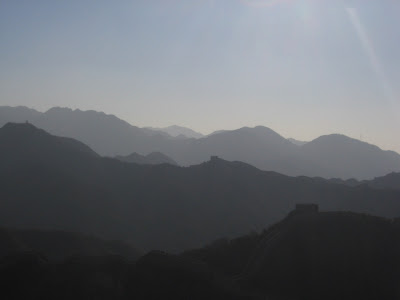According to the Chinese lunar calendar, Saturday evening marked the first day of the Year of the Pig. Standing at the Wudaokou boulevard at midnight, the entire city erupted in the sound of thousands of fireworks igniting simultaneously. Bottlerockets, flashbangs, noisemakers and firecrackers were lit from roofops and bus stands; families fired Roman candles from their apartment windows and still others threw canisters of explosives from footbridges spanning the wide, empty streets. Monolithic clouds of smoke and gunpowder drifted between buildings as the celebration of Chunjie continued until early the next morning.
The following days were reserved for rest, ancestor worship and prayer for good fortune in the coming year. At this time the gongyuan and holy sites are filled with families in worship. The temples reeked of musty, ancient wood and the acrid taste of candlesticks lit in offering to the Buddha. The below photos were taken at two such sites over the last few days.
20 February 2007
13 February 2007
Dust Devils in Heidian
A strong wind today cleared people from the streets. Market stalls and shacks were closed shut, and the for stands had tarpaulin weighted down by rocks draped over them. On days like this, you can feel the sand behind your ears and on your eyelashes; the way it grinds between your back teeth when you try to work up some spit and wet your lips. I took a few photos of the mostly empty streets in my neighborhood before the weather kicked up.
 A back alley.
A back alley.
 A back alley.
A back alley.11 February 2007
Yellow Hills
Saturday was spent traveling to the Great Wall, after having settled in Beijing earlier this week. The city-wide urban renewal policies are most evident as seen from a dusty stretch of highway leading westward toward the mountains. Entire neighborhoods known as hutong have been reduced to rubble by groups of migrant workers who go from site to site with nothing but sledgehammers and the clothes on their backs. The foundations are left in neat lines, like graves along the side of the road. In an adjacent district, tall, modern apartment buildings are being erected. Each has a large crane on top, and some are simply metal skeletons wrapped in bamboo scaffolding, ready to be completed. Beijing is dominated by cranes. They have an eerie quality when they are still, especially at dawn -- looming like a fleet of alien arbiters.
In the wintertime, the countryside is a sweep of brown and pink rock, dotted by scraggly sun-bleached pines. The Great Wall is incredible and beautiful; it seems to be such a natural and fluid element of the landscape when you see it snake along the tops of the hills then plummet over a distant ridge. From the top of one tower I could see the mountains extending into the wastes, like the knuckles two interlocked hands.
In the wintertime, the countryside is a sweep of brown and pink rock, dotted by scraggly sun-bleached pines. The Great Wall is incredible and beautiful; it seems to be such a natural and fluid element of the landscape when you see it snake along the tops of the hills then plummet over a distant ridge. From the top of one tower I could see the mountains extending into the wastes, like the knuckles two interlocked hands.
Subscribe to:
Comments (Atom)














 Locals.
Locals.